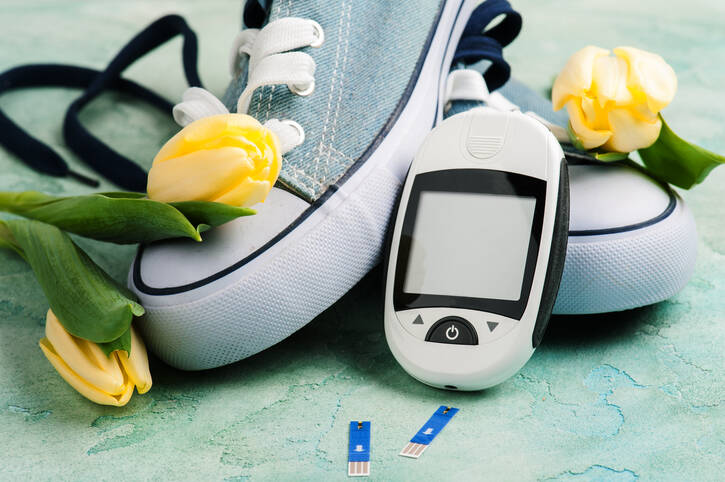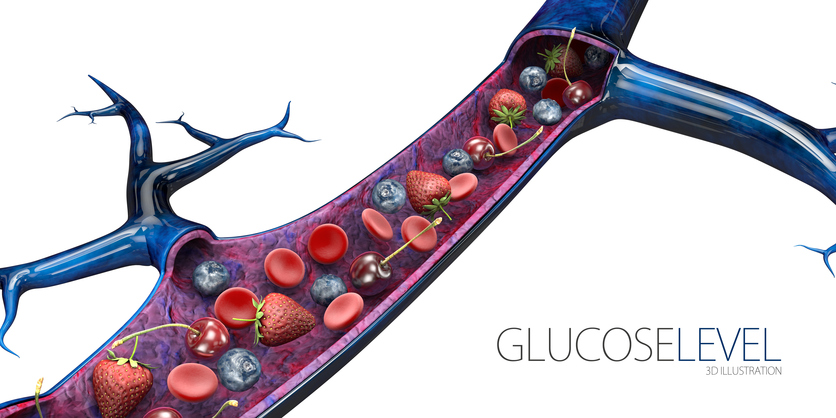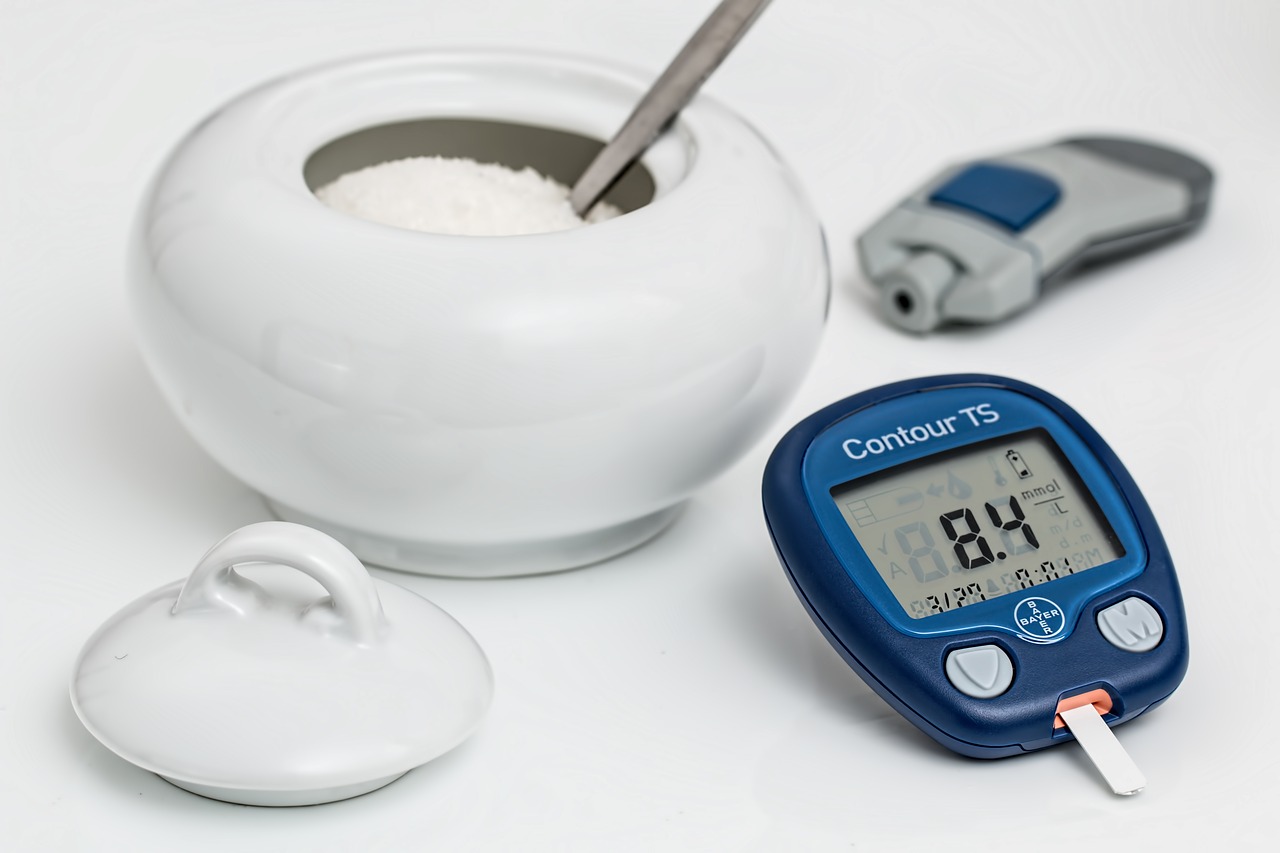- slovenskachirurgia.sk - hypoglycemia, hyperglycemia
- wikipedie.cz - hyperglycaemia
- internimedicina.cz - acute complications of diabetes mellitus
- solen.cz - algorithm of pharmacotherapy of hyperglycaemia in diabetes
- pediatriepropraxi.cz - differential diagnosis of hyperglycaemia in children and adolescents
Hyperglycaemia: How does excess blood sugar manifest itself and what is the treatment?

Today's era is advanced in many areas, but still short on many. Civilization diseases occur at a high rate. One of them is diabetes or diabetes mellitus. In terms of incidence, it ranks third, right after cardiovascular and cancer diseases. We know two basic types of diabetes and the myriad complications that accompany them. One of them is hyperglycemia - or elevated blood sugar. What is it, what are the causes, what causes it and what are the most common questions patients ask?
Article content
- Hyperglycaemia and its causes
- Pathophysiology, symptoms and risks of hyperglycaemia
- Causes of blood sugar fluctuations
- Frequently asked questions from patients with hyperglycaemia in practice
- Can I get diabetes if I eat a lot of sweets?
- What is a normal sugar level and what is considered hyperglycemia?
- I am diabetic. What other sugar levels are considered normal?
- What does HI, LO and Er mean on the glucometer?
- Does the quality of the meter depend on its price?
- Which glucose meter is the best one for you?
- What is a glucose profile?
- When is a sugar level in disarray and needs to be measured?
- Is it possible to detect excess ketone bodies in the urine at home?
- Your relative is diabetic, you find him unconscious and you do not have a glucose meter. What should you do in this situation?
This increased amount of sugar in the blood damages the blood vessels and organs of the patient.
Hyperglycaemia and its causes
Diabetes mellitus is a metabolic disease caused by a complete or relative lack of insulin. Its main feature is sugar (glucose) intolerance. A disorder of the pancreas (pancreatic gland) is responsible for the lack of insulin.
Read also.
The role of the pancreas in blood sugar regulation

The pancreas is an organ about 28 cm in size. It is a gland of the digestive system located in the upper left part of the abdominal cavity just behind the stomach. It is characterized by external and internal secretion.
The internal secretion, and therefore the production of insulin, is carried out by about 1.5 million so-called islets of Langerhans. Their structure is strikingly different from the rest of the pancreatic tissue.
Thus, the islets of Langerhans produce a peptide hormone - insulin - into the bloodstream. Insulin is directly responsible for the entry of glucose (sugar) into the cells of the whole body except the liver. It also controls its use in the body, thus directly affecting the amount of glucose in the blood.
When it is deficient, glucose is not absorbed as it should be. It stagnates in the bloodstream. This is how hyperglycemia occurs.
The excess sugar is also excreted in the urine. This is called glycosuria and is a concomitant of hyperglycaemia.
Lifetime limitations of diabetes
The diabetic must compensate for the lack of insulin for life, depending on the type and severity of the disease. In some cases, the restrictions are dietary. This is when the diabetic is on a diet.
Patients should consume foods low in carbohydrates.
Others have to take medication or inject (subcutaneously, under the skin) insulin. In the most severe cases, the patient is forced to wear an insulin pump, which permanently supplies the missing insulin.
We prevent hyperglycaemia in several ways
- dietary restrictions (low-carbohydrate diet)
- medication - oral antidiabetic drugs
- insulin (injections, pens, pumps)

Pathophysiology, symptoms and risks of hyperglycaemia
Symptoms of hyperglycemia are related to the overall pathophysiology of diabetes. The inability to use energy from glucose (stagnation in blood and urine) causes oxidation of fatty acids, which are released from other components (fats, proteins).
This results in an excess of ketone bodies (acetoacetate, acetone and β-hydroxybutyrate) as the final product of this oxidation.
The condition where there is increased acidity in the blood when there is an excess of ketone bodies is called ketoacidosis. The ketone bodies cause an acetone taste in the mouth and the increased sugar in turn causes dry mouth and a feeling of excessive thirst.
This causes the patient to drink excessively and then urinate excessively. There is an increased amount of both sugar and ketone bodies in the urine and also an acetone smell.
What does a patient with hyperglycemia look like?
- Red skin colour
- skin warm to the touch
- excessive sweating
- excessive thirst
- dryness of mucous membranes - dry mouth
- Acetone mouth odour
- rapid, deepened breathing - Kussmaul's breathing
- low blood pressure
- high heart rate
- nausea
- vomiting
- inappetence
- stomach pain
- frequent urination in large quantities
- acetone smell of urine
- general weakness, malaise, fatigue
- visual disturbances
- neurological symptoms, convulsions
- disturbances of consciousness, disorientation, aggressiveness
- unconsciousness - hyperglycaemic coma
The most serious risks associated with hyperglycaemia
Hyperglycaemia can cause disturbances in general metabolism up to metabolic acidosis (overacidification of the body), disturbance of electrolyte, fluid and acid-base management.
The patient is at risk of dehydration and associated hyponatremia (low sodium) and hypokalemia (low potassium).
The metabolic disorder leads to renal failure with the need for dialysis. Ultimately, they fail completely and the patient dies.
Another complication is cerebral edema with profuse neurological symptomatology, disturbances of consciousness, unconsciousness and even death. Chronic, long-term patients with prolonged elevated sugar levels are at high risk of microvascular and macrovascular vascular damage and end-organ damage.
Hyperglycaemic coma - the most serious consequence of hyperglycaemia
Hyperglycaemic coma is a severe state of unconsciousness due to excess glucose and insulin deficiency from various causes. This condition is irreversible without prompt and urgent help. The patient does not wake up on his/her own, without administration of insulin and adjustment of sugar and insulin levels. It requires hospitalization in a medical facility (intensive care unit, metabolic unit), intensive observation with control of laboratory parameters and vital signs.
However, hypoglycaemic coma is more common, hyperglycaemic coma is rare.
You may not have known:
Improperly treated (violation of treatment regimen) or untreated diabetes impairs quality of life. It shortens life expectancy by up to 30% and is one of the most common causes of blindness.
Causes of blood sugar fluctuations
The physiological value of glycaemia ranges from 3.3 mmol/l to 6.6 mmol/l. In long-standing diabetics, it tends to be more. Their norm, when they do not experience any problems, can be set as high as 11 mmol/l.
Over the years, the level of the "norm" for an individual rises and is highly individual for each individual patient. If a person is set to higher values, they may have symptoms of hypoglycemia even when the actual measurements show the norm or slightly higher values.
Every diabetic should have a glucose meter at home so that they can check their capillary blood glucose if necessary. Complications occur sporadically when adhering to a treatment regimen and while controlling blood sugar.
Patients are most often at fault for their own deterioration in health. This happens mostly when they do not follow their diet. Less often it is a case of forgetting a daily dose of medication or insulin.
TIP: Read also the article.
Non-adherence to medication regimen as the main cause
- Non-compliance with dietary restrictions means that the patient, despite being aware of a serious diagnosis, consumes foods with excessive sugar content (cookies, sweets, sweetened drinks) or consumes appropriate foods in excessive quantities (large amounts of fruit).
- The omission or incorrect dosage of medication and insulin is often purely accidental, especially in older people with dementia who have simply forgotten. This leads to a lack of insulin and an excess of sugar - hyperglycaemia. There is also a situation where patients forget that they have injected insulin and do it again. This results in a double dose. Then there is an excess of insulin and a lack of glucose, leading to the opposite condition - hypoglycaemia.
- The combination of a dietary defect and incorrect dosage is also common. This happens mainly in situations where the patient knows that for some reason he or she is going to break the diet (planned party, wedding) and therefore takes a double dose of the drug or injects a larger dose of insulin. Whether such a person develops hypoglycaemia or hyperglycaemia depends on several factors (amount and type of food, alcohol, physical exertion, associated diseases, age).
Interesting:
Today's times are characterised by an increasing disparity in people's economic situation. In the past, these disparities were not so pronounced. A very common phenomenon, not only in relation to diabetes but also to other diseases, is the violation of a treatment regimen due to lack of finances. In practice, we encounter this situation quite often and the number of such cases is increasing.

Frequently asked questions from patients with hyperglycaemia in practice
Interestingly, the biggest mistake of diabetic patients is inadequate information. In spite of sufficient information about diabetes, there are many patients who are not sufficiently informed (indifference, lack of interest, influence of social situation).
Lack of knowledge about one's own disease is the most common reason for serious and sometimes fatal errors. Despite medical advances, the possibility of measuring glycaemia in the home and the possibility of treatment, the same questions are constantly repeated by patients.
Can I get diabetes if I eat a lot of sweets?
Perhaps the most common myth is associating overeating sweets with the development of diabetes. Diabetes never arises in a person as a result of excessive intake of sweets. It arises in pancreatic disorders and is also hereditary.
Sweets are only a problem in a patient who has diabetes.
What is a normal sugar level and what is considered hyperglycemia?
Normal blood sugar levels range from 3.3 mmol/l-6.6 mmol/l. This is the level measured from capillary blood (finger prick blood). In hospital, blood is taken from a vein, with norms ranging from 3.9 mmol/l-5.5 mmol/l.
Higher sugar values are considered to be elevated glycaemia. In such cases, the patient should see a doctor who will confirm or rule out diabetes on the basis of further investigations. Hyperglycaemia is considered to be a condition where the blood sugar value exceeds 11 mmol/l.
Of course, each patient should be assessed individually.
I am diabetic. What other sugar levels are considered normal?
It is typical for a diabetic to have blood sugar levels that are higher than those of a healthy person. With proper treatment of diabetes, blood sugar levels are up to 8.5 mmol/l.
They should not exceed 11 mmol/l.
However, it all depends on the type of diabetes, the duration of the disease, associated diseases, the age and general condition of the patient, his dietary habits or adherence to treatment.
What does HI, LO and Er mean on the glucometer?
Regardless of the type, size and price of the glucose meter, all devices have one thing in common. It is the display of values and alerts on the screen. Glycaemic values are displayed in digits in millimoles per litre (mmol/l), and on some glucose meters the values can be switched to mg.
However, what if the display does not show numbers, but unfamiliar letters? It is very important that every patient correctly understands the warnings that the device gives.
These are three basic parameters common to all types of glucose meters.
Glucose meter alerts on the screen in the table
| Alerts displayed | Description |
| HI |
|
| LO |
|
| Er |
|
Does the quality of the meter depend on its price?

There are more than 100 types of glucose meters in different price ranges. Each of them must meet certain criteria and ISO guidelines. ISO is a non-governmental international organisation that is responsible for the quality of all devices, including medical devices, and develops the standards and requirements they must meet.
If a device has large deviations and does not meet the standards, it cannot be registered in most countries and cannot get on the market. This means that any registered glucometer should be of good quality, regardless of its price.
Which glucose meter is the best one for you?
Everyone prefers something different. For young diabetics, a smaller sized glucometer is preferable, which they can easily put in their trouser pocket or handbag without taking up too much space.
On the other hand, heavier diabetics with poorly compensated diabetes prefer a device with a larger memory, where they can check their measurements back, especially if their blood glucose levels fluctuate frequently.
These older readings are also important for medical check-ups, where the diabetologist gets a better overview of the patient's disease and its progress. Older people prefer larger glucose meters with larger digits.
What is a glucose profile?
Glycaemic profile means what is known as 'self-monitoring' of glucose levels during the day. It involves repeated measurements of sugar in a group of people at risk.
It is recommended for severe and decompensated forms of diabetes, especially those with an insulin pump, diabetics with a current acute infectious disease, young children and pregnant women.
When is a sugar level in disarray and needs to be measured?
Any fluctuation in sugar is typically manifested in addition to the objective values on the device. In the event of any change in the health status of a diabetic, it is advisable to measure the glycemia. If you do not have a device, it is important to know the basic differences in the symptoms typical of hypoglycemia and hyperglycemia.
- Facial and skin colour - In hypoglycaemia, the patient is noticeably pale and sweaty, whereas in hyperglycaemia there is a sudden flushing of the skin.
- Appetite - A patient with hypoglycaemia feels very hungry, while with hyperglycaemia the patient feels reluctant to eat, nauseous, vomits and has an increased sense of thirst.
- Odour - Acetone mouth odour is typical of hyperglycaemia, and urine may also smell. It is absent in hypoglycaemia.
- Behaviour - Hypoglycaemia is characterised by aggressiveness and disorientation (the patient gives the impression of being drunk). Although this is also present in hyperglycaemia, fatigue, weakness and drowsiness tend to predominate.
Is it possible to detect excess ketone bodies in the urine at home?
The detection of ketone bodies (or other substances and their increased or decreased values) in the urine is also possible in the comfort of the home with the help of test strips. They can be purchased in a pharmacy and are an excellent indicator of various parameters in the urine (blood, urobilinogen, bilirubin, protein, nitrite, glucose, leukocytes, ketone bodies, pH but also urine density).
The strip is used directly during urination or after urinating in a clean container (it is advisable to shake the container with urine before using the strip). The strip should be dipped into the container for about one second.
The result is evaluated after about one minute by the change in the colour scale on the strip. It is compared with the colour scale representing the standard, which can be found on the strip packaging.
Your relative is diabetic, you find him unconscious and you do not have a glucose meter. What should you do in this situation?
If the patient is unconscious and not breathing, it is necessary to start resuscitation.
Taking into account unconsciousness with preserved breathing and heart action, we must put the affected person in a stable position (if you do not know how, just turn him on his side). It is necessary to check the oral cavity for the presence of vomit, which we wipe with a cloth.

Never inject insulin!
Diabetics are much more likely to go into a hypoglycaemic coma from lack of sugar.
Hyperglycemic coma is rare. Therefore, injecting insulin would worsen the patient's condition and exacerbate unconsciousness.
Also in hyperglycaemia, injecting insulin (not knowing the correct dose) could mean a rapid glycaemic spike. This could cause the transition from hyperglycaemia to hypoglycaemia and even cause the death of the patient.
Administration of sugar does no harm.
It is not wrong to give sugar to a patient in a coma of unclear cause (even a non-diabetic, unless it is a traumatic coma).
If he is hypoglycemic, we raise his sugar level and in some cases the patient comes out of unconsciousness.
If he is in a hyperglycaemic coma, the sugar levels are usually so high that a little honey or a sugar cube will not seriously impair his condition. In other causes of unconsciousness, a little honey will not impair the condition either.
In an unconscious patient who is lying on his side, we either put sugar under the tongue or rub it on the cheek mucosa (the space between the cheek and the tooth line). From there it is absorbed into the bloodstream. It can take a varying amount of time for the sugar to be absorbed and for the levels to rise.
Never put sugar or sugary drinks directly into the patient's mouth - there is a risk of inhalation and choking.
Ako správne merať cukor
Interesting resources










